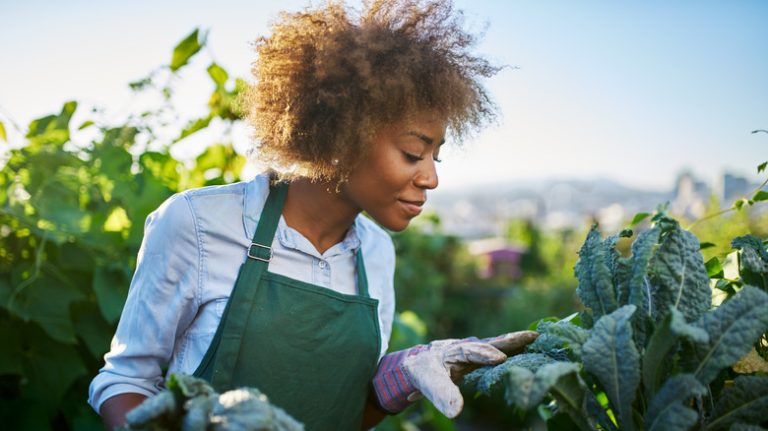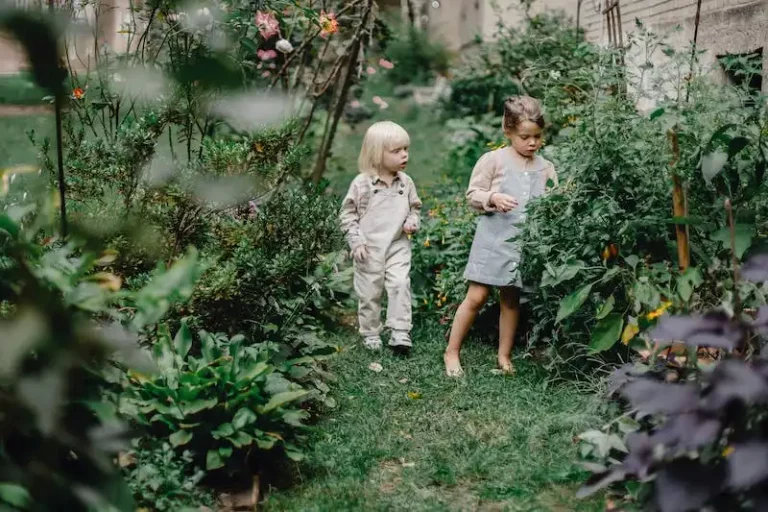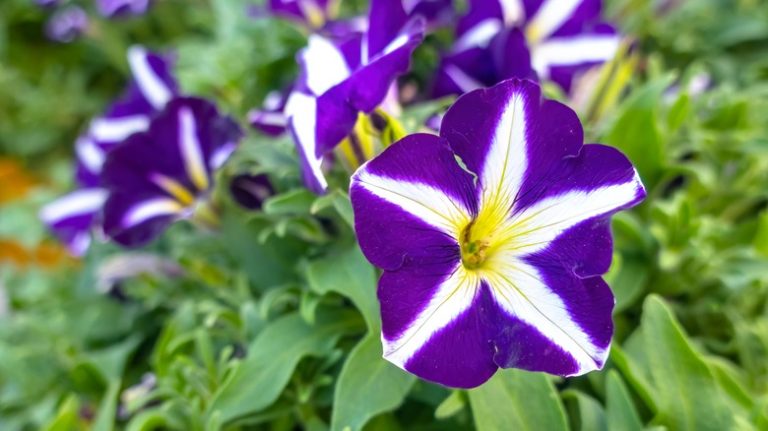If you didn’t know and had to guess where vanilla comes from, an orchid would probably not be your first hunch. But it’s true. The seed pods from this vining orchid, also known as vanilla beans, are used to create the sweet spice known around the world. The extract of this plant is commonly used in baking and its essential oils are often an important ingredient for creating botanically based perfumes.
Vanilla planifolia is the scientific name given to these primitive plants. Native to Mexico, yet cultivated worldwide, they are classified as perennial vines. Per the American Orchid Society, orchids make up the biggest plant family with an incredible range of diversity. The family contains specimens with numerous designs and sizes, differing environmental needs, growth patterns, flower colors, and more. Within the vanilla genus, there are over 100 varieties.
The vanilla planifolia plant is not parasitic, although it will attach itself to a tree trunk. It is also considered semi-epiphytic, which means it can be planted in soil or it can pull its share of water and micronutrients directly from the air.
How to use vanilla orchid in garden
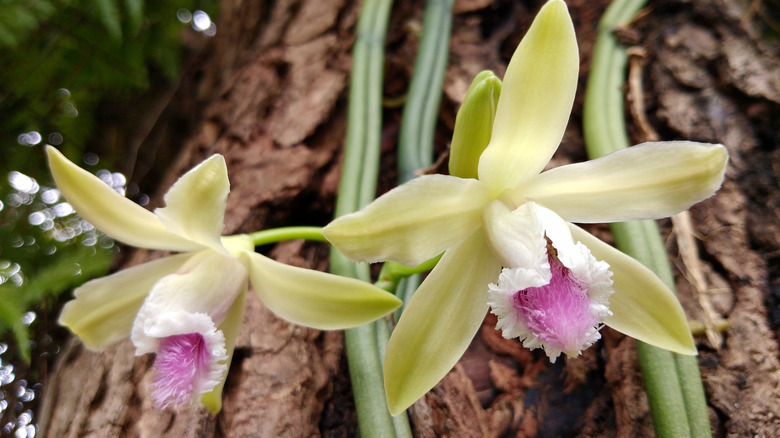
It takes a focused and patient gardening enthusiast to care for a vanilla orchid to the point that it will produce bean pods, as this can take many years. However, gardeners with less time to tend to these plants can still have a lovely flowering vine shooting up an established tree or flushing out a trellis.
Vanilla orchid vines have been known to grow as long as 300 feet. It’s important to keep that in mind when planning your hot and humid zone 10 or higher home garden. The University of Florida’s Gardening Solutions website says these orchids grow best when supported. You can use stakes, a trellis, or even one of your already planted trees. Air circulation and space are top priorities. And, while these plants like high temperatures, they also need a bit of shade from the intense sun.
While the individual flowers of the vanilla orchid do not live for very long, the plant itself can go on living for many years. Plus, the raceme clusters will rapidly reproduce so the plant remains in bloom for lengths of up to a few months at a time. Alongside its tubular creamy greenish and yellow blooms, properly pollinated vanilla orchids will grow hard coated seed pods that give off a delightful fragrance.
How to grow vanilla orchids
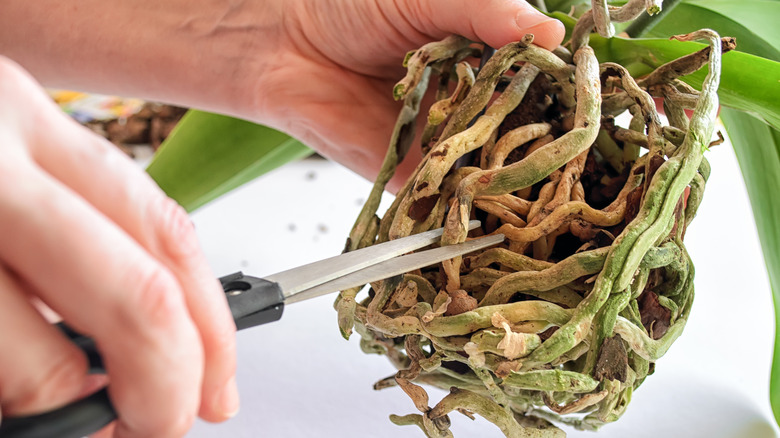
Vanilla planifolia thrives naturally in tropical climate zones, but that doesn’t mean you can’t make it happen elsewhere in the world as well. However, Living Color Garden Center explains that the vanilla orchid is not a plant you can grow from seed. It’s best to propagate new plants through stem cuttings or simply purchase a baby plant at a reputable orchid nursery. To grow strong and hardy, these plants require air flow and adequate space.
When propagating a stem cutting, either start with a small pot of orchid mix (primarily consisting of bark, peat, and perlite) or prepare a spot outside at the base of a tree, provided you live in a climate appropriate area. It’s always helpful to add compost to the planting area and mix it thoroughly with the naturally present soil when working outdoors. SFGate says to clip off the bottom leaves of the cutting, which will expose the nodes. When you plant the cutting into the soil, push it down far enough to cover those now-exposed nodes. Water regularly to keep the soil moist for the first month, after which new growth should begin to appear.
Once you’ve got your orchid in its happy place, use a stake for support or train it to grow up a trellis. In order to yield vanilla beans, you’ll need to manually spread pollen from one flower to the next. Per Living Color Garden Center, this can be accomplished every other day with a paintbrush.
How to care for vanilla orchids
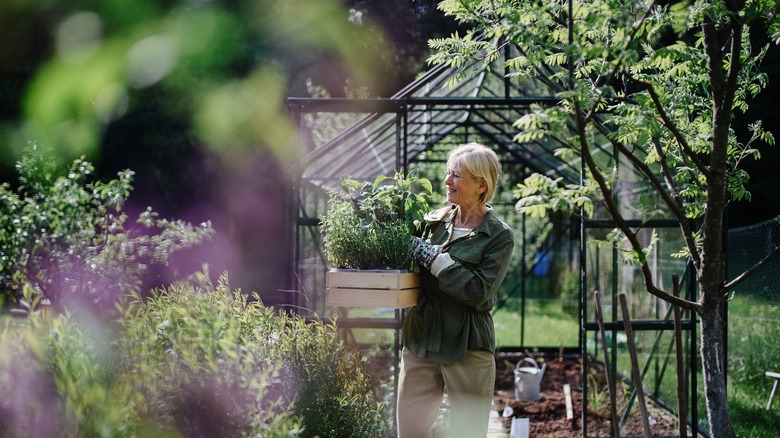
Halfpoint/Shutterstock
Ron Finley, the well-known designer, community activist, and urban gardening champion based in Los Angeles, says it can take up to four years for an indoor vanilla orchid to bloom. However, with patience and the right conditions, you can grow a flourishing plant. According to Finley’s MasterClass lessons on gardening, these conditions include high humidity, regular fertilizing, orchid specific potting soil, a support system, and just enough water.
Since humidity is such an important factor, Finley recommends using a greenhouse, unless you live in a zone where the climate stays particularly warm year-round. In that case, the orchid can grow outdoors. If you’re stuck indoors due to temperature drops, Gardening Know How adds that a well-circulated bathroom can be a great place to quickly up the temperature and create moisture. Just don’t forget to provide adequate light alternatives if your home’s bathroom does not have a window.
When shopping for fertilizer and potting soil, ask a knowledgeable sales representative for products specifically created for optimum orchid health. Lastly, don’t forget those support structures.
Are vanilla orchids toxic?
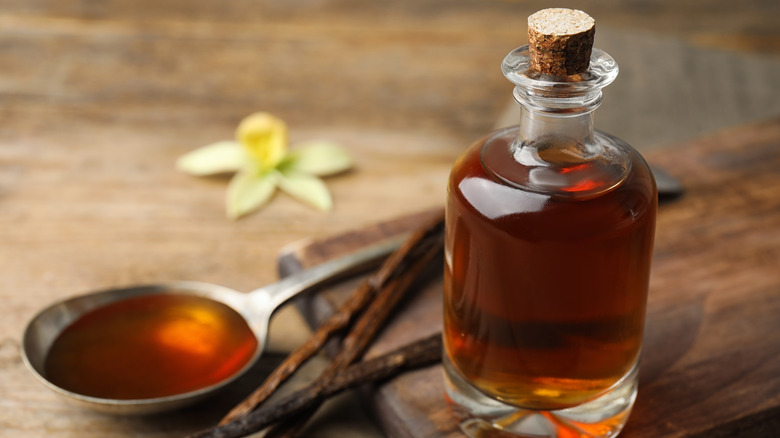
false/Shutterstock
There is good news here about vanilla orchids: They are considered entirely nontoxic to pets and humans. In fact, it’s quite the opposite with the ASPCA tip website for professionals suggesting veterinarians keep vanilla flavored ice cream on hand to help ease a fussy pet’s stomach when they are experiencing intestinal distress from other plants.
Because it is deemed safe for consumption, vanilla is commonly used as a food additive and flavoring in beverages, baked goods, and much more. Also, there are many purported claims regarding the spice’s potential health benefits. Vanilla can be found in some pharmaceuticals due to its response as a fever reducer and its ability to soothe gastrointestinal flare ups. Nutrition Today lists treatment of spasms, dysmenorrhea, and blood clotting as further uses for this versatile plant.
According to HerbaZest, vanilla has long been considered an aphrodisiac and in more traditional, nonscientific applications, it is thought to lower blood pressure and relieve a cough.
How to repot vanilla orchids
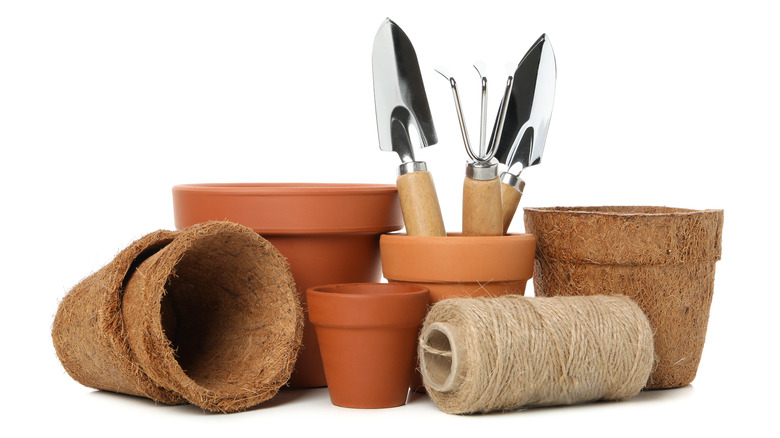
AtlasStudio/Shutterstock
UK House Plants recommends minimal repotting of vanilla orchids — once every three years or so is plenty — to keep your vanilla orchid’s root system undisturbed. It’s best to do so when the plant is dormant, so no flowers, yet still healthy.
For an excellent and detailed guide to repotting your Vanilla planifolia, check out Carter & Holmes. Their plant care specialists suggest damp sphagnum moss as the only ingredient needed to fill your orchid’s new shallow and wide pot. Because sphagnum moss can retain too much water, which will eventually lead to root rot, it’s important not to press it down into your pot. Instead, aerate it with some gentle fluffing and, as always, make sure your new pot has plenty of holes for proper drainage.
Carter & Holmes also shows you how to fasten your plant’s long roots into place using floral wire and snippers. From there you can use stakes or a trellis just like you would in the garden.
The history of vanilla orchids
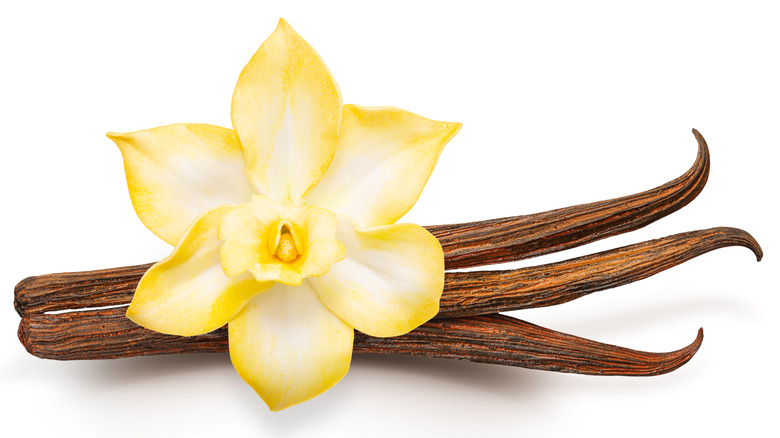
According to The Chef Apprentice School of the Arts’ history of vanilla, the legendary Spanish conquistador Hernán Cortez was the one to bring vanilla to Europe back in the early 1500s. The flower was popular but the bean pods proved impossible to cultivate, and it took hundreds of years for anyone to solve the mystery.
Eventually botanists figured out that Mexico, where Cortez first drank a vanilla-infused royal beverage with the infamous Aztec king Montezuma, is home to a specific species of bee, the Melipone. This bee was necessary in order to pollinate the orchids and produce the bean pods, but it did not exist outside of its native region. For centuries botanists failed to find a solution for pollinating orchids in Europe, until the problem was finally resolved in 1841 by a young enslaved boy named Edmond Albius when he was only 12 years old.
The Linnean Society of London credits Albius, who was trained in horticulture by Ferréol Bellier-Beaumont in France, with discovering that the male and female parts of the vanilla orchid were on different plants. He then developed a technique to pollinate them manually. Though he traveled widely to educate other botanists and growers, and his innovative method monumentally benefitted the incredibly lucrative vanilla industry, enslavement robbed Albius of ever being compensated or given credit for his work while he was alive.


